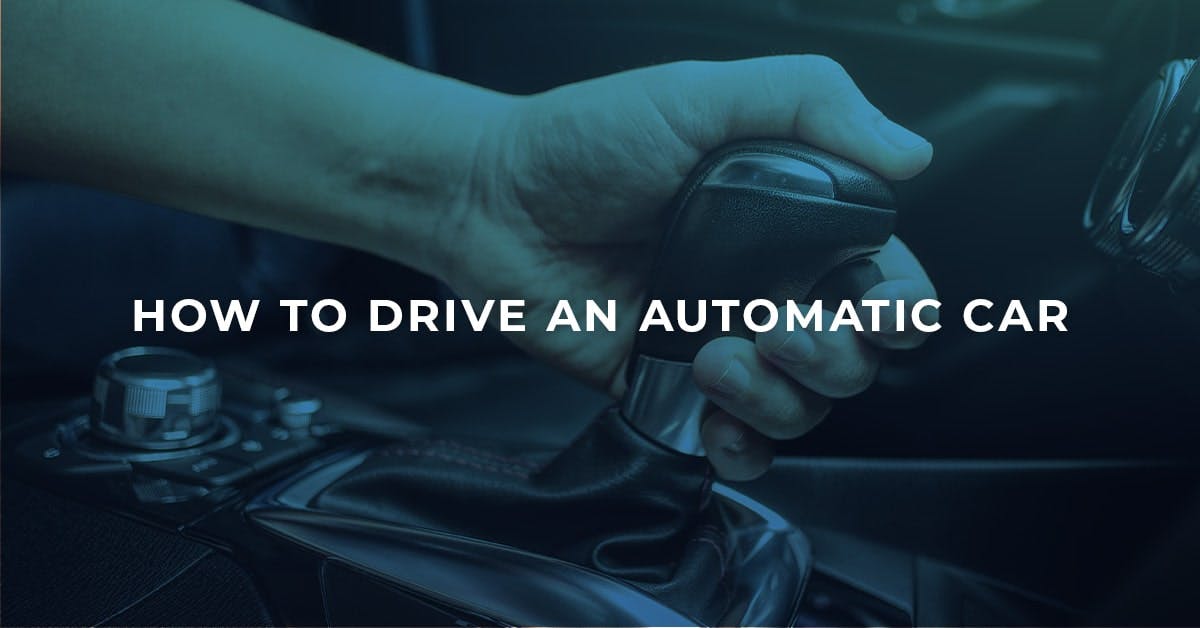Automatic cars have become increasingly popular in recent years.
All electric cars are automatic, and the majority of petrol and diesel car manufacturers offer their most successful models in automatic.
Some would argue that automatic cars are much easier to drive, making for a smoother, hassle-free driving experience.
Whether you are thinking about switching to an automatic, or are looking into automatic lessons, here is the ultimate guide to driving an automatic car.
Page Contents
What Is an Automatic Car?
An automatic car is a vehicle which uses an automatic transmission system, so the driver does not have to shift gears manually.
They use sensors which shift gears at the appropriate time using internal oil pressure, meaning the driver doesn’t have to manually change gears.
You can tell if a car is a manual or an automatic by looking at the pedals – an automatic only has two, accelerate and brake (in simple terms, stop and go), and a manual has a third clutch pedal.
On a manual vehicle, it is used to disengage the engine from the gearbox.
Your automatic’s gearbox works differently, so the clutch pedal is not needed.
The Different Types Of Gearboxes
Although not the same as a traditional transmission, your automatic will still have one:
A conventional automatic gearbox uses a ‘torque-converter’. The torque-converter works by being connected to the engine’s electrical control unit so the transmission can take control of the vehicle and change the gears where necessary.
Continuously variable transmissions, or CVT for short, are used in hybrid cars. They use a belt instead of cogs, which works on a pulley system to allow for a seamless gear change every time.
Dual-clutch automatics is similar to the gearbox on a manual car but is controlled by the car’s computer. It uses two clutches instead of a torque converter; one controls the odd gears and the other controls the even gears.
The automated manual transmission has a hydraulic actuator system which operates the gears and the clutch. Again, it is similar to a manual system but is operated by an internal computer.
The Gearbox
The gearbox has four standard settings:
Park is used when you are stopped and getting out of the car. This locks the transmission in place to avoid any unwanted movement – you still need to use the handbrake too.
Reverse does exactly that. You put the car in reverse when you need to back up or reverse into a parking space.
Neutral is for when you stop for a short amount of time, such as at lights or in traffic. It is the equivalent of taking a manual car out of gear.
Drive is for when the car is moving so it can select the gear it needs to be in automatically.
If you are used to driving a manual car, an automatic one shouldn’t be too difficult, it’ll just be an adjustment.
You may find yourself reaching for the gearstick to change gears, to begin with, but the car will do it for you and you’ll be able to feel it.
How To Start An Automatic Car
- Put your foot on the brake pedal.
- Start the car: either with the key or the start button.
- Without taking your foot off the brake, move the shifter to D to drive forwards or R to reverse backwards.
- Lift your foot from the brake. This will cause the car to creep without touching the accelerator, so only remove your foot once you are ready to start driving.
- Press down the accelerator to gain speed.
- The car will change gears for you automatically.
How To Stop An Automatic Car
- Reduce your speed – again the car will change gears for you.
- When you’re ready, press the brake until the car stops.
- Keep your foot on the brake and move the car into P.
- Apply the handbrake like you would in a manual car.
- Turn off the ignition.
Are Automatic Cars More Expensive?
Automatic cars can be more expensive to purchase due to the complex components that are used in an automatic transmission compared to those in a manual transmission.
This also means that they can be more expensive to fix if things go wrong.
However, modern automatics tend to be more fuel efficient than manual cars, saving you money on fuel in the long run.
FAQs
Can I Drive An Automatic Car With A Manual Licence?
Can I Drive A Manual Car With An Automatic Licence?
Are Automatic Cars Safer?







